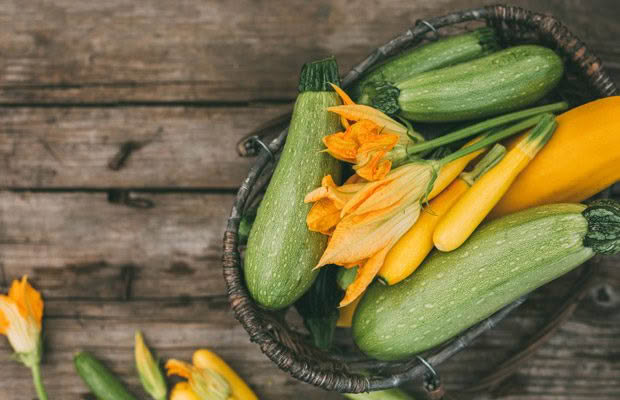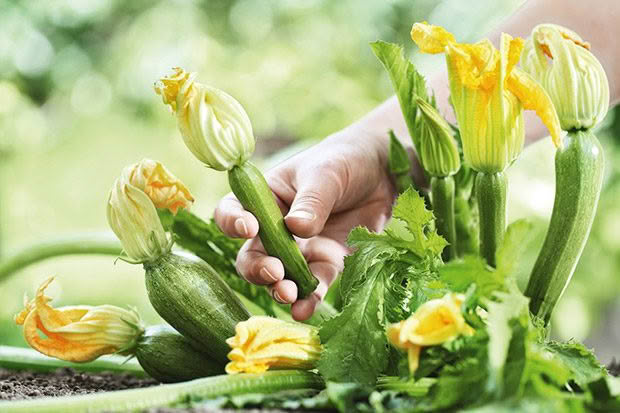How to grow delicious courgettes

Sow your courgette seeds now for a fruitful summer harvest.
Words: Jenny Somervell
Like cucumbers, courgettes prefer a sunny sheltered site, and a rich, loamy soil at a temperature of at least 16°C. They adapt to most soil types, provided there is enough moisture retention. The seeds need 15-30°C to germinate.
If it’s cool, start them in a greenhouse on a heat pad or on a sunny windowsill.

The plants are frost tender, and may need protection, such as frost cloth or a cloche, in cold spring weather. Fruits will have pitted skins from chilling injuries if it gets too cold.
Courgettes can be either trailing or bush. Bush varieties take up less space and can be planted 60cm apart. The leaders on trailing varieties should be pinched once 50cm long, to encourage laterals.
8 TIPS FOR GROWING COURGETTES
1. Plant 2-3 plants on mounds of soil to encourage multiple flowers for pollination.
2. Leaves transpire a lot in hot weather, and plants are shallow-rooted. Mulch plants with polythene, compost or straw.
3. Avoid overhead watering, which encourages mildew.
4. Fruit will be ready to harvest 40-60 days from planting and can exhaust themselves. Keep plants well-watered and fed, and have younger ones coming on so you keep fruit fresh and avoid mildew.

5. If you don’t see any fruit to start with, don’t panic. Courgettes form male flowers first to attract pollinating insects. These grow on long, thin stems and have a single, long stamen covered
in pollen.
6. Female flowers follow, on shorter stems. They have a stigma with multiple stems inside it and a swollen base (the ovary) behind the flower. Once pollinated, this will start to swell.
7. To set fruit, female flowers need to be pollinated multiple times and this can be tricky, given flowers only last one day. Encourage bees by planting borage, catmint, hyssop, alyssum, and grape hyacinth in between and around your plants.
8. On overcast days it can be worth hand-pollinating. Remove a male flower, strip the petals, and press the anthers into the centre of a female flower.
Love this story? Subscribe now!
 This article first appeared in NZ Lifestyle Block Magazine.
This article first appeared in NZ Lifestyle Block Magazine.
